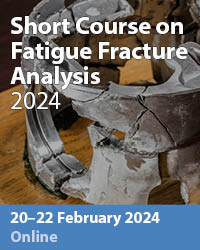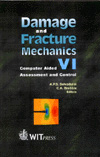Modeling Dynamic Fracture Following High Shock Compression
Price
Free (open access)
Transaction
Volume
26
Pages
13
Published
2000
Size
983 kb
Paper DOI
10.2495/DM000251
Copyright
WIT Press
Author(s)
J. Eftis, C. Carrasco & R. Osegueda
Abstract
Constitutive-microdamage equations are developed that are capable of simulating thermo-mechanical material behavior following high shock compression, dilatation, microdamage evolution and fracture, caused by projectile-target impact at hypervelocity. 1 Introduction Impact at hypervelocity of a target plate by a projectile can cause various types of damage, e.g. cratering and spall fractures, fragmentation of projectile and the impact area of the target, and formation of high velocity debris clouds that may include melting and vaporization of projectile and target materials [1-5]. The most dominant of the factors that determine the damage outcome are the impact velocity, the ratio of the projectile diameter to thickness of the target, and the thermomecha
Keywords





